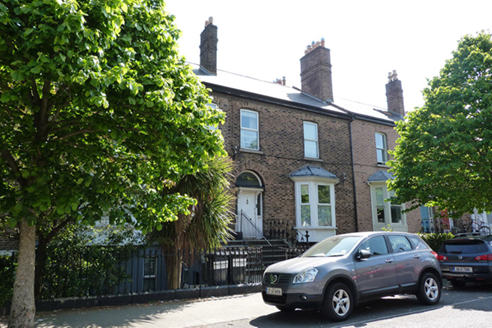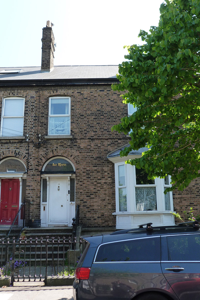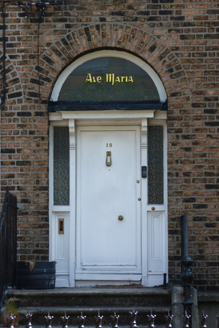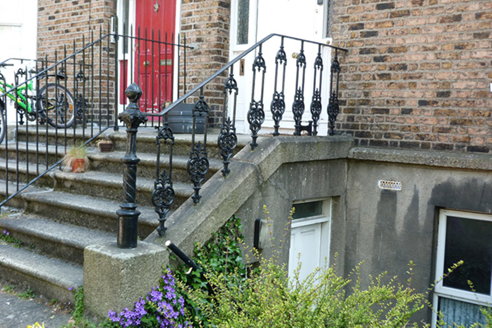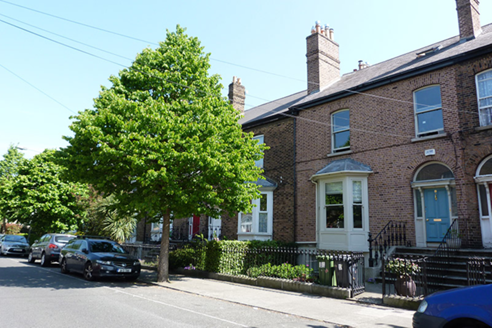Survey Data
Reg No
50110184
Rating
Regional
Categories of Special Interest
Architectural, Artistic
Original Use
House
In Use As
Apartment/flat (converted)
Date
1875 - 1895
Coordinates
315442, 232628
Date Recorded
11/05/2017
Date Updated
--/--/--
Description
Terraced two-bay two-storey former house over raised basement and having attic accommodation, built c. 1885, return to rear (east) elevation and canted-bay window to front (west) elevation. Part of terrace of nine. Now in use as apartments. Pitched roof, with dormer window to rear, and brick chimneystacks having clay pots. Brown brick, laid in Flemish bond, to walls, with granite plinth course over lined-and-ruled rendered wall to basement. Square- and segmental-headed window openings having granite sills. canted-bay window with hipped leaded roof, carved timber cornice, sill and timber panelled apron. Replacement windows throughout. Round-headed door opening having carved timber doorcase comprising pilasters, brackets and stepped cornice. Plain fanlight and sidelights, replacement door. Shared nosed granite steps having cast-iron bootscrape to platform, with decorative cast-iron handrail and post. Cast-iron gate having decorative collars and matching railings on cut granite plinth wall to front.
Appraisal
This building retains much of its original form, and is characteristic of suburban residential development in Dublin at the close of the nineteenth century. Skilled artisanship is evident in the iron and stonework, bringing aesthetic value as well as technical interest to the composition. Stamer Street was named for William Stamer, Lord Mayor of Dublin from 1809-1819. The closure of Portobello Gardens in 1865 and the later infilling of the Portobello Basin freed up residential development land in the area. The east side of the street comprises a relatively unified terrace with similar parapet heights and fenestration pattern.
